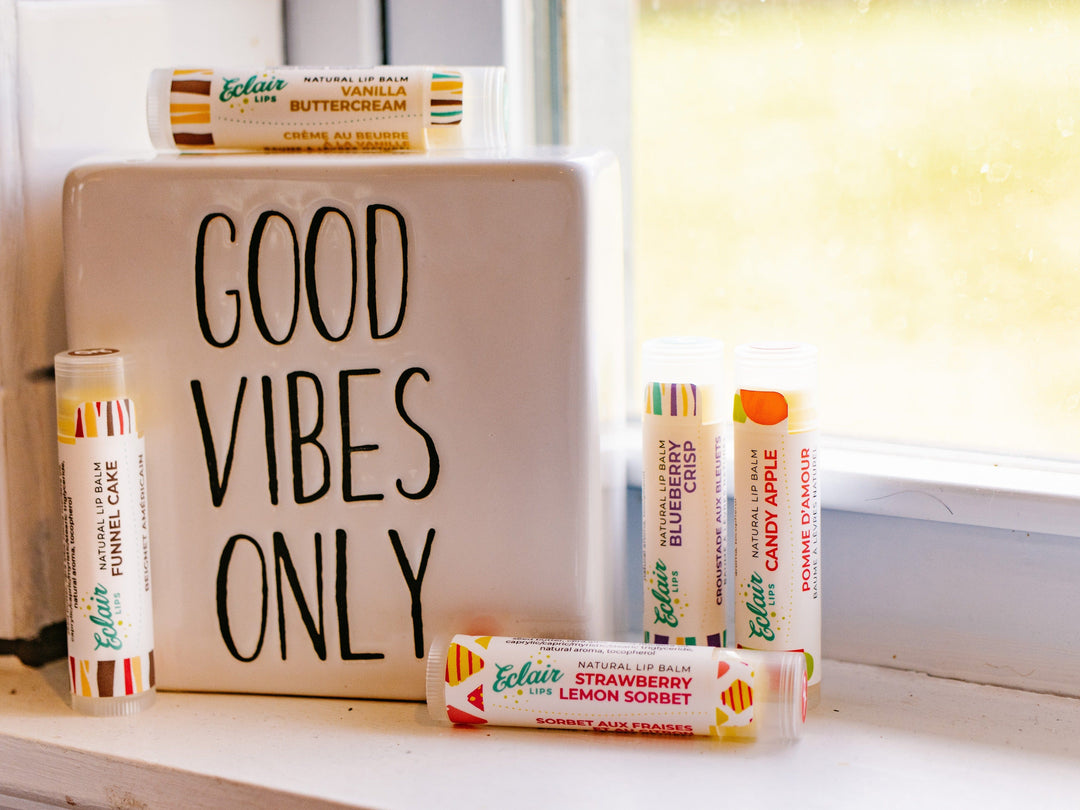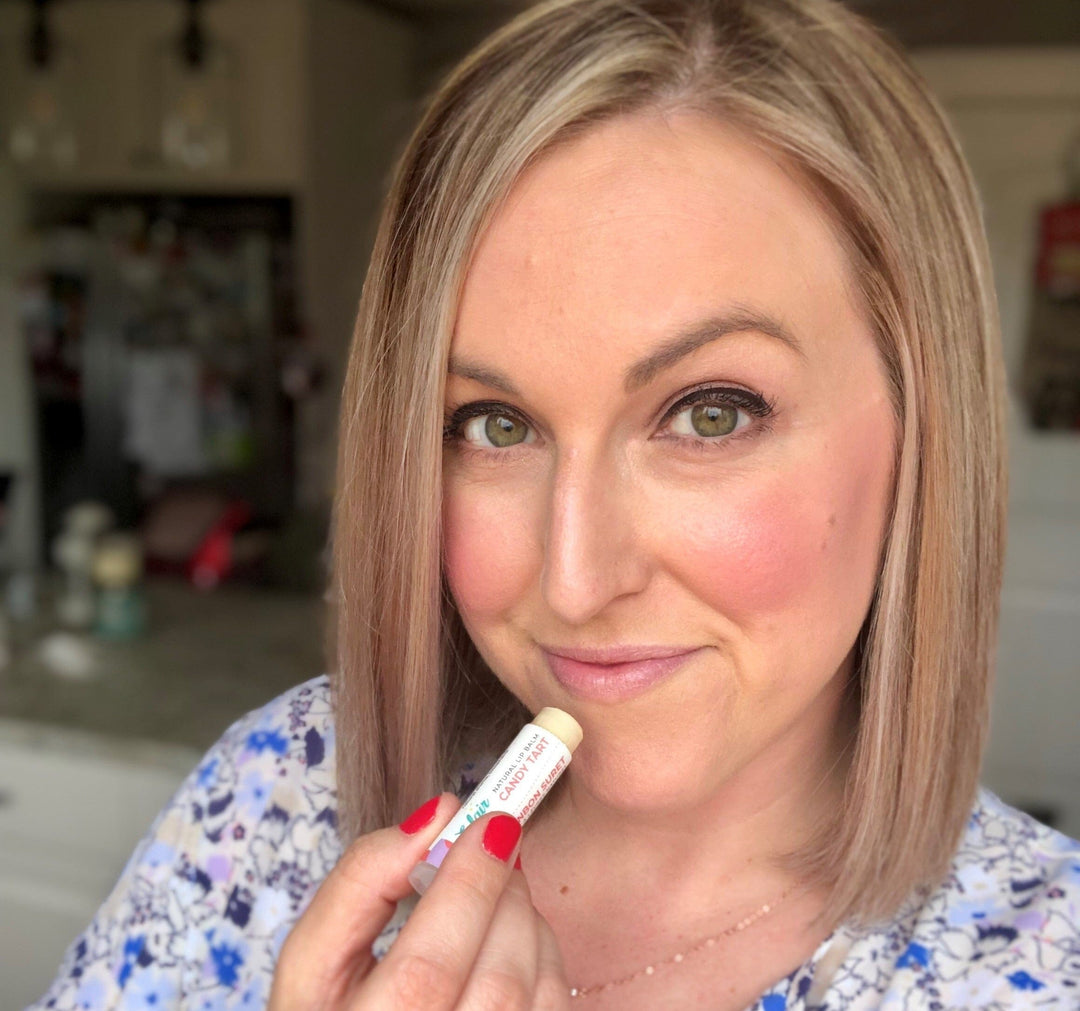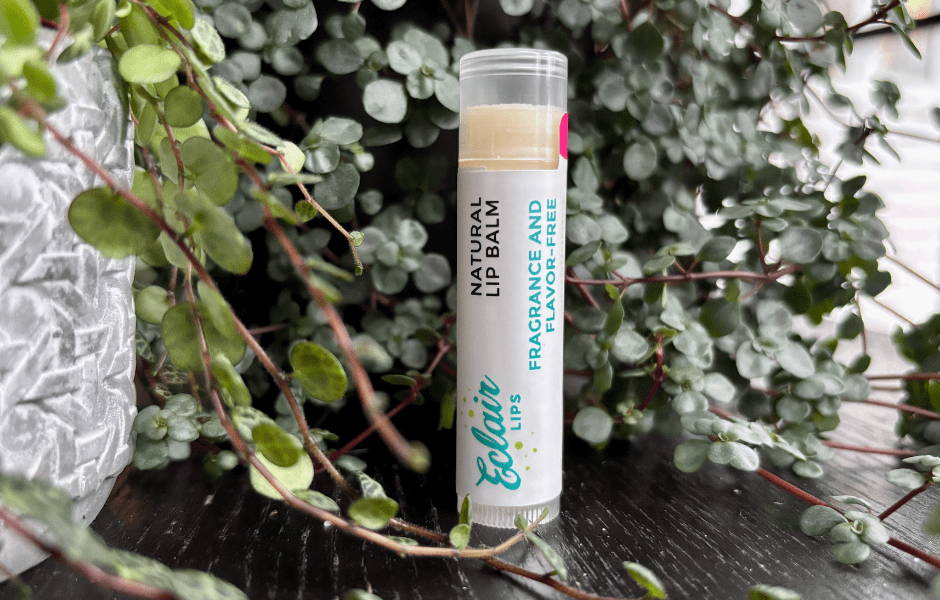What Is Lip Tint: Your Complete Guide to Long-Lasting Lip Colour
Understanding Lip Tints and How They Compare to Traditional Lip Products
What is lip tint, exactly? If you've been scrolling through beauty aisles or social media and noticed this product everywhere, you're not alone.
Lip tints have become one of the most popular lip colour options over the past decade, and they offer something different from traditional lipstick or gloss. Think of a lip tint as a sheer wash of colour that stains your lips rather than sitting on top of them. The result is a natural, long-lasting look that doesn't feel heavy or require constant touch-ups throughout the day.
The beauty of lip tints is their versatility. Whether you're heading to a coffee meeting in Toronto, a beachside walk in Vancouver, or just running errands around Moncton, a lip tint gives you that effortless "just bitten" look without the maintenance.
But how do they actually work, and are they right for you? Let's break it all down.

Quick Takeaway
- Lip tints are lightweight colour products that stain your lips for long-lasting wear without the heavy feel of traditional lipstick
- They come in water-based, oil-based, and gel formulas, each offering different finishes and levels of hydration
- Most lip tints last 4-8 hours on the lips, with some formulas lasting even longer through meals and drinks
- The sheer, buildable nature of tints makes them perfect for a natural, no-makeup look or as a base for more dramatic lip colour
Contents
The History of Lip Tints
Lip tints have been around longer than you might think. The modern lip tint trend started in South Korea in the early 2000s, where K-beauty brands developed water-based formulas that gave lips a fresh, youthful stain.
These products were inspired by traditional Korean beauty ideals that favoured a natural, gradient lip look (often called the "popsicle lip") rather than the bold, defined lips popular in Western makeup at the time.
But the concept of staining lips goes back even further. In the early 1900s, women used beet juice and berry stains to add colour to their lips and cheeks. These natural pigments would temporarily dye the skin, creating a flush that lasted hours.
Fast forward to today, and we've refined the formula quite a bit, but the basic principle remains the same: colour that becomes one with your lips rather than sitting on top of them.

How Lip Tints Actually Work
So what is lip tint made of, and how does it create that lasting colour? Unlike lipstick (which uses waxes and oils to deposit pigment on the surface of your lips), lip tints use dyes or pigments suspended in a lightweight base that allows the colour to penetrate the top layers of your lip skin.
When you apply a lip tint, the liquid or gel formula delivers these colour particles directly to your lips, where they bind temporarily to create a stain.
The key ingredients vary by formula type, but most lip tints include some combination of water or oils, colouring agents (often food-grade dyes), and sometimes humectants like glycerin to keep lips comfortable. The lightweight base evaporates or absorbs quickly, leaving behind just the colour.
This is why lip tints feel so much lighter than traditional lipstick, which keeps its waxy or creamy texture on your lips throughout the day.
The staining process is gentle and temporary. Unlike permanent tattoo ink, lip tint pigments sit in the very outer layers of your lip skin and fade naturally as your skin cells shed and renew (which happens constantly). That's why a lip tint might last through your morning coffee and lunch, but will gradually fade by evening.
Different Types of Lip Tints
Not all lip tints are created equal. There are several distinct formulas on the market, each with its own benefits and feel. Understanding what is the purpose of lip tint in each format helps you choose the right one for your needs.
Water-Based Lip Tints
Water-based tints were the original K-beauty formula that started the whole trend. These have an incredibly lightweight, almost watery texture that absorbs quickly into lips.
They provide the most natural, matte finish and are perfect if you want a barely-there feel. The downside? Water-based tints can be drying for some people, since they don't contain moisturising oils or butters.
If your lips tend toward the dry side, you'll want to prep with a good lip balm before applying.
Oil-Based Lip Tints
Oil-based tints combine staining pigments with nourishing oils, creating a formula that hydrates while it colours. These tints have more slip and glide than water-based versions, making them easier to apply evenly. They leave a subtle sheen on the lips rather than a completely matte finish.
The trade-off is that oil-based tints may not last quite as long as water-based versions, since the oils can break down the stain over time (especially when eating oily foods).
Gel Lip Tints
Gel tints fall somewhere in between water-based and oil-based formulas. They have a thicker, more viscous texture that gives you good control during application.
Gel tints often provide the most vibrant colour payoff and can be buildable for a more intense look. Many gel formulas include humectants that help keep lips comfortable throughout the day. They're a great middle-ground option if you want the longevity of a water-based tint with a bit more comfort.

Benefits of Using Lip Tints
Why choose a lip tint over traditional lipstick or gloss? There are several compelling reasons this product category has taken off.
Long-lasting wear is the biggest draw. Once a lip tint has set, it's remarkably resistant to fading. You can drink your morning coffee, eat lunch, and chat with friends without constantly checking your reflection or reapplying. For busy people (which is most of us), this convenience factor is huge.
The natural, sheer finish appeals to those who want a polished look without appearing heavily made-up. Lip tints enhance your natural lip colour rather than covering it completely. This makes them perfect for everyday wear, professional settings, or anyone who prefers a more subtle beauty routine.
They're generally low-maintenance. Unlike lipstick that can smudge onto cups, masks, or partners, lip tints stay put on your lips where they belong. And because the colour is sheerer and more natural-looking, any slight fading throughout the day is barely noticeable.
Buildable intensity means you control how bold or subtle you want to go. One light layer gives you a hint of colour that's barely there. Build up multiple layers, and you can achieve a more saturated, statement look. It's versatile depending on your mood or occasion.
Drawbacks to Consider
Lip tints aren't perfect for everyone or every situation. It's worth knowing the potential downsides before you commit.
Application can be tricky if you're new to tints. Because they dry quickly and start staining immediately, you need to work fast and precisely. Any mistakes or uneven application will show, and correcting them isn't as easy as wiping off traditional lipstick. Practice helps, but expect a learning curve.
Some formulas can be drying, particularly water-based tints. If you already struggle with chapped or sensitive lips, the alcohol or drying ingredients in some tints might make things worse.
Pairing your tint with a nourishing lip balm before and after application helps, but it's something to watch out for.
Removal requires more effort than regular lipstick. Because tints are designed to stain, they don't simply wipe off with a tissue. You'll typically need an oil-based makeup remover or cleansing balm to break down the pigments. Some people find this extra step annoying, especially at the end of a long day.
Limited shade ranges compared to lipstick. Because tints work with your natural lip colour to create the final shade, brands typically offer fewer colours. You'll mostly find reds, pinks, berries, and corals. If you're looking for an unconventional shade like blue, black, or metallic, tints probably won't deliver.

How to Apply Lip Tint Properly
Getting a smooth, even application with lip tint takes a bit of technique. Here's how to do it right.
Start with prepped lips. Exfoliate any flaky skin (a gentle lip scrub works perfectly for this), then moisturise with a hydrating balm.
Let the balm absorb for a few minutes, then blot away any excess. You want your lips smooth and comfortable, but not slick with product when you apply the tint.
Work quickly and confidently. Apply the tint to the centre of your lips first, then blend outward using your fingertip, a cotton swab, or the applicator. Tap and blend rather than dragging or rubbing, which can create patches or streaks. You typically have 10-30 seconds before the tint sets, so don't overthink it.
Build gradually if you want more intensity. It's easier to add another layer than to fix an overly dark application. Let the first layer dry completely (about 30-60 seconds), then add more colour where you want it.
This gradient technique, where the centre of your lips is darkest and the colour fades toward the edges, is what many people love about tints.
Set with a light dusting of translucent powder if you want maximum longevity (optional, but some people swear by this trick). Pat a tiny amount of powder over the tint with your fingertip, let it sit for a moment, then gently brush off the excess. This can help lock in the colour even more.
Top with a comfortable balm or gloss if you prefer a less matte finish. Once your tint has completely dried and set (give it a full minute), you can layer a clear or tinted balm over top for added moisture and shine without compromising the staying power of the tint underneath.
How Long Does Lip Tint Last?
This is one of the most common questions about tints, and the answer varies by formula, application, and your daily activities.
On average, most lip tints last 4-8 hours on the lips with normal wear. That includes talking, drinking water or coffee, and light eating. Water-based tints tend to last on the longer end of this range (6-8 hours), while oil-based tints may fade a bit sooner (4-6 hours) because oils break down the pigments faster.
Heavy, oily meals will shorten wear time significantly. If you're eating pizza, burgers, or anything greasy, expect to need a touch-up afterward. The oils from food will dissolve some of the tint, especially around the inner lip area where food makes the most contact.
How long do lip tints last compared to other lip products? Here's where tints really shine. Traditional lipstick typically needs reapplication every 2-4 hours, and glosses last even less (1-2 hours).
Liquid lipsticks can compete with tints for longevity, but they often feel heavier and more drying on the lips. Tints offer that sweet spot of long wear with a lightweight feel.
Factors that affect longevity include your lip texture (smoother lips hold colour better), how thoroughly you prep your lips, and your body chemistry (some people's lips just hold stains better than others). Staying hydrated also helps, oddly enough. When your lips are well-moisturised from within, the tint absorbs more evenly and lasts longer.
Lip Tints vs. Other Lip Products
Understanding what is lip tint used for becomes clearer when you compare tints to other lip products you might already use.
| Product Type | Finish | Wear Time | Feel on Lips | Best For |
|---|---|---|---|---|
| Lip Tint | Sheer to medium, matte to satin | 4-8 hours | Lightweight, barely-there | Natural everyday colour, long-lasting wear |
| Traditional Lipstick | Opaque, various finishes | 2-4 hours | Creamy, noticeable | Bold colour, special occasions, variety of shades |
| Lip Gloss | Shiny, sheer to medium | 1-2 hours | Sticky or slick | High shine, plumping effect, layering |
| Liquid Lipstick | Opaque, matte | 6-10 hours | Heavy, very dry | Ultra-long wear, dramatic looks, transfer-proof |
| Tinted Lip Balm | Sheer, natural | 2-3 hours | Moisturising, comfortable | Everyday hydration with a hint of colour |
Tinted lip balms deserve special mention here because they're often confused with lip tints. While both offer sheer colour, tinted balms prioritise moisture and comfort over longevity.
A tinted balm is essentially a regular lip balm with a bit of pigment added. It won't stain your lips or last through meals the way a true lip tint does, but it will keep your lips more comfortable throughout the day. Think of tinted balms as your everyday moisture with a colour bonus, while lip tints are your long-wearing colour with a moisture compromise.

Who Should Use Lip Tints?
Lip tints work wonderfully for certain people and situations, but they're not universally perfect for everyone.
You'll love lip tints if you:
- Prefer a natural, no-makeup makeup look
- Need your lip colour to last through busy days without touch-ups
- Dislike the heavy, waxy feel of traditional lipstick
- Want buildable colour you can customise to your mood
- Are tired of lipstick transferring onto cups, masks, or clothing
You might skip lip tints if you:
- Have very dry, chapped, or sensitive lips (the formulas can be drying)
- Prefer bold, opaque lip colour with full coverage
- Love experimenting with unconventional lip shades
- Want moisturising lip products as your priority
For most people, the ideal solution is having both options in your collection. Use tints for your busy weekdays when you need that set-it-and-forget-it convenience, and reach for your favourite lipstick or tinted balm when comfort and moisture matter more.
Tips for Getting the Most from Your Lip Tint
Keep your lips exfoliated and moisturised as part of your regular routine, not just before tint application. Using a gentle lip scrub once or twice a week prevents flaky buildup that causes uneven tint application.
Store your tint properly to extend its life. Keep it away from heat and direct sunlight, which can break down the formula and affect colour consistency. Most tints last 12-24 months when stored correctly.
Layer strategically for different occasions. For daytime, use one light layer for that subtle wash of colour. For evening or special events, build up 2-3 layers and top with a glossy balm for dimension and shine.
Don't panic if you make a mistake. While tints do set quickly, you have a brief window to fix uneven application. Keep a cotton swab dipped in oil-based makeup remover or micellar water nearby during application. If you notice a patch or streak, quickly dab it away and reapply.
Experiment with mixing shades if you're feeling creative. Once you're comfortable with application, try layering different tint colours to create custom shades. A pink base with a coral top layer, for example, can give you a unique peachy tone that's all your own.

Frequently Asked Questions
Are lip tints safe for sensitive lips?
Most lip tints are formulated with cosmetic-grade ingredients that are safe for use on lips. However, if you have sensitive skin or known allergies, check the ingredient list carefully.
Some tints contain alcohol, fragrances, or dyes that might irritate sensitive lips. Look for fragrance-free options and always patch-test a new product on your inner arm before applying it to your lips.
Can you sleep in lip tint?
While lip tints are designed to last many hours, it's not ideal to sleep in them. Your lips need time to breathe and regenerate overnight, and keeping colour on them for extended periods (12+ hours) can contribute to dryness.
Remove your tint before bed using an oil-based cleanser, then apply a nourishing overnight lip balm to keep your lips comfortable.
How do you remove stubborn lip tint?
Oil-based makeup removers or cleansing balms work best. Apply the remover to a cotton pad, hold it against your lips for 10-15 seconds to let it break down the pigments, then gently wipe away.
You may need to repeat this process 2-3 times for very long-wearing tints. Coconut oil or olive oil from your kitchen also work in a pinch.
Can you layer lipstick over lip tint?
Yes! This is actually a great trick for extended wear. Apply your tint first and let it dry completely, then top with lipstick in a similar shade. The tint acts as a base colour that shows through if your lipstick wears off, so you're never left with bare lips.
This combo gives you the staying power of tint with the colour variety of lipstick.
Do lip tints work on dark skin tones?
Absolutely. Because tints are sheer and work with your natural lip colour, they adapt to different skin tones beautifully. Deeper tints (berries, wines, deep reds) show up particularly well on darker skin, while lighter tints create a subtle flush.
The key is choosing a tint shade that's darker than your natural lip colour so it shows up properly.
Are lip tints the same as lip stains?
The terms are often used interchangeably, and they work on the same basic principle of staining your lips. However, "tint" usually refers to the newer generation of products with improved formulas that offer better comfort and colour choices.
"Stain" is the older term, often associated with more drying, marker-like formulas from the early 2000s.
Can children or teens use lip tints?
Lip tints are generally safe for teens who want to experiment with makeup. The formulas are typically less heavy and more forgiving than traditional lipstick, making them a good starter product.
However, supervise younger children (under 12) when using any cosmetic products, and check that the formula doesn't contain ingredients they're sensitive to.
Making Lip Tints Work for You
Lip tints offer a unique combination of natural-looking colour, long-lasting wear, and lightweight comfort that's hard to beat. Whether you're rushing between meetings in Montreal, enjoying a patio brunch in Halifax, or just want a reliable lip colour that won't quit, tints deliver.
They're not perfect for every situation (very dry lips need extra care, and the application takes practice), but once you find the right formula and technique, they become an indispensable part of your routine.
And remember, you don't have to choose between tints and other lip products. Mix and match based on what your day demands, layer them for custom looks, and enjoy having options that work as hard as you do.
More Lip Balm Guides
- How to find the best lip balm for your needs
- Choosing natural lip balm that actually works
- What makes lip balm truly hydrating
- Understanding lip balm ingredients
- Dermatologist-recommended lip balm options
- Finding lip balm flavours you'll love
- Protecting your lips in winter weather
- When to choose unscented lip balm
- Lip care during Accutane treatment
- Lip balm options for men
Explore Our Online Lip Balm Shop
At Eclair Lips, we believe the best lip balm is the one you love to use every day. Every balm is handmade in small batches with natural ingredients, playful dessert-inspired flavours, and a texture we obsessed over until it felt just right. We ship anywhere in Canada and the US, so whether you are in Toronto, Halifax, Las Vegas, or Chicago, you can stock up on your favourite lip balm Canada style, right from your couch.
In our shop, you will find tinted lip balm for a hint of colour, fragrance free balm if your lips are on the sensitive side, gentle lip scrubs to keep everything smooth, and even lip balm for kids when you want something safe and fun to share. Looking for variety? Try a lip balm set to explore new flavoured lip balm favourites or to give as a gift.
Our brand is built on honesty, humour, and heart, and that means no scare tactics, no overblown claims, just lip care that feels good and makes you smile.
Take a peek at our collections here: https://eclairlips.com.
Disclaimer: The information in this post is meant to be helpful, and while we love dorking out about lip balm, it isn't medical advice. Everyone's needs are different, so if you have concerns about allergies, sensitivities, pregnancy, or a medical condition, please check with a healthcare professional before trying new products.




